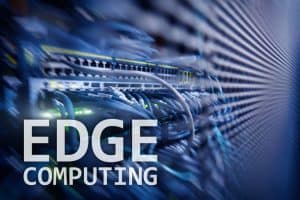
Responding quickly is a critical business driver. This requires data centers live on the edge to deliver real-time data for an enhanced customer experience.
Consumers expect instantaneous information and services from the companies they interact with. IDC estimates that the average person will interact with connected devices approximately 4,800 times a day by 2025, and while these interactions yield valuable user information that enable companies to personalize their customer service, the amount of data creates major challenges for data centers.
See also: Center for Edge Computing
Streamlining data center infrastructures provides businesses and cloud service providers with operational and financial benefits, while also setting the foundation to deliver real-time data that results in an outstanding experience for consumers.
While a lot of companies know the importance of implementing a digital transformation, such as upgrading ERP software or modernizing cloud data centers, to stay competitive and improve the customer experience, only 3% have implemented network-wide digital makeovers, according to a study conducted by SAP. The survey also revealed that 70% of companies who have made these changes indicate they are seeing significant value as a result of their digital transformations in customer satisfaction surveys.
To drive personalization, services need to react more quickly to customer needs and habits in order to increase revenue. As a result, the ability to respond quickly in real-time has become a critical business driver.
Other technologies that are creating a richer customer experience are AR and VR, but they’re also drastically increasing the volume of data, so data centers are going to have to work even harder to process this data.
Given this landscape, it’s important for businesses and cloud service providers to rethink their data center architecture to adapt to this new world order: and one critical transformation is implementing a cloud computing and edge strategy that keeps data closer to the end-user.
Gartner estimates that by 2025, 75% of data will be processed at the edge, outside of traditional, centralized data centers and the cloud, an increase from less than 10% today. This shift to the edge is driven by a need for a faster response time. The main benefit of edge computing is its ability to eliminate latency.
While edge computing allows data to be processed near its source, the collected information does not need to travel across the country to a central data center as it would in a traditional cloud-based architecture; however, the speed is still much faster, keeping the latency low.
This dispersed network of edge nodes delivers quicker responses to end-users and also enables ultra-fast storage, retrieval, and real-time data analysis – a vital feature for cloud service providers and organizations in industries such as healthcare, finance, and automotive. The minimal response time in analyzing this data enables these industries to respond with more efficiency, better service, and further innovation through new applications
Another benefit of edge computing is its associated cost savings. The more data that can be processed locally minimizes data transmission costs, resulting in lower data processing expenses. This is especially appealing for cloud service providers who can pass on the savings to their enterprise customers.
Drawing from experience in helping design and develop some of the world’s most advanced data centers for cloud service providers, here are the top things to consider when architecting your data center edge:
- Consider Total Cost of Ownership
- Design a solution with flexible power options
- Ensure your supply chain can support a vast deployment footprint
- Customize the infrastructure design for optimal performance in a variety of physical environments
As consumer expectations continue to rise and the need for 24/7 access to information becomes the standard, edge data center technologies will continue to play a great role in delivering and improving personalized customer service.




























